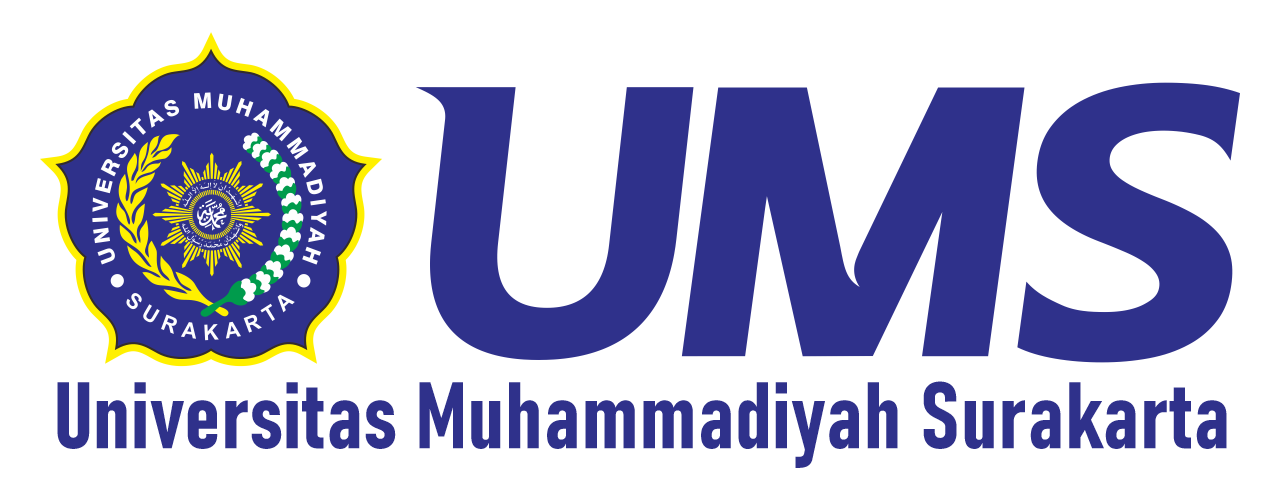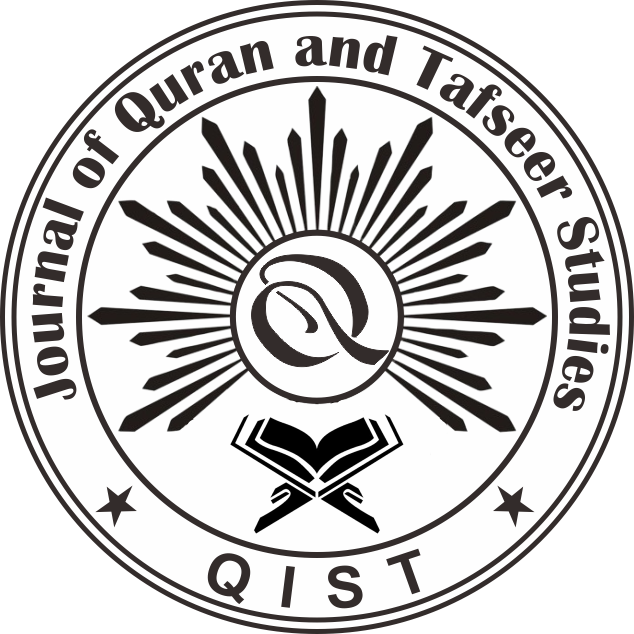UINSU Students' Understanding of Aurat and Shar'i Clothing in the Qur'an Surah An-Nur verse 31 and Surah Al-Ahzab verse 59
DOI:
https://doi.org/10.23917/qist.v4i1.10676Keywords:
Aurat, Syar'i Clothing, Muslim Students, Social MediaAbstract
This study examines the understanding of students at the State Islamic University of North Sumatra (UINSU) regarding aurat and sharia-compliant clothing as outlined in QS. An-Nur: 31 and QS. Al-Ahzab: 59. Employing a qualitative approach with a phenomenological method, the research explores the subjective experiences of 20 students from diverse faculties through in-depth, semi-structured interviews. Findings reveal that while most students possess a general awareness of Aurat boundaries, only a few can articulate the relevant Qur'anic arguments in detail. The practice of wearing sharia-compliant clothing is predominantly shaped by social influences-such as peer dynamics, campus culture, and digital media exposure-rather than a deep textual understanding of the verses. Social media functions as a contested space: it simultaneously serves as a vehicle for Islamic outreach (Da'wah) and as a channel for aesthetic fashion trends, often leading to ambivalence in religious expression. Thematic analysis identifies three core factors influencing students' clothing practices: religious education, social norms within the campus environment, and digital media influence. This study underscores the urgency of a contextual and integrative Islamic educational framework-grounded in Maqashid Shariah-to cultivate an ethical, reflective, and substantive awareness of Islamic dress among contemporary Muslim students.
References
[1] A. Asrori, S. and Syauqi, "KONTRIBUSI PENDIDIKAN ISLAM DALAM REPRODUKSI IDENTITAS SOSIAL MUSLIM INDONESIA," vol. 2507, no. February, pp. 1-9, 2020.
[2] F. Putri and Achsania Hendratmi, "Pengaruh Celebrity Endorser dan Content Marketing terhadap Purchase Intention Fashion Muslim," J. Ekon. Syariah Teor. dan Terap., vol. 9, no. 5, pp. 672-680, 2022, doi: https://doi.org/10.20473/vol9iss20225pp672-680.
[3] L. Hakim, "Fenomena bercadar perempuan aceh kontemporer dalam analisis sejarah, budaya dan teologi," Sosiol. Agama Indones. (Jsai, vol. 04, no. 01, 2023.
[4] Husna, "Peran fear of missing out (fomo) dan penggunaan media sosial terhadap artikulasi identitas keislaman pada kalangan milennial muslim yang mengikuti tren hijrah di instagram," Psikol. Sos., vol. 21, no. 01, 2023.
[5] A. Tawakalni, R. Y. A. Hambali, and A. G. Albustomi, "Konsep Hijab Menurut Murtadha Muthahhari dan Relevansinya dengan Persoalan Etis dan Teologis," J. Ris. Agama, vol. 2, no. 3, pp. 1-18, 2022, doi: https://doi.org/10.15575/jra.v2i3.18302.
[6] L. N. Hidayah, "'KONSEP MUHAMMAD SHAHRU TENTANG AURAT PEREMPUAN.,'" Al-Adabiya J. Kebud. Dan Keagamaan, vol. 14, no. 02, 2019.
[7] M. Q. Shihab, , Tafsir Al-Misbah (Pesan, Kesan, dan Keseharian al-Qur'an), Lentara Ha. 2002.
[8] W. az Zuhaili, Tafsir al-Munir: Aqidah, Syari'ah dan Manhaj. Suriah, 1991.
[9] N. Afifah, "Pakaian Syar'I, Media Dan Konstruksi Kesalehan Perempuan," J. Sosiol. Reflektif, vol. 13, no. 1, pp. 61-73, 2019, doi: 10.14421/jsr.v13i1.1544.
[10] Masri, "Eksistensi Aurat Wanita Dalam Fiqih," J. Al-Qadau Peradil. Dan Huk. Kel. Islam, vol. 06, no. 01, 2019.
[11] A. Azwar and M. N. Nasir, "Muslim Fashion Development Strategy in the Halal Industry in Indonesia: Some Notes from the Quran and Hadith," al-Irsyad J. Islam. Contemp. Issues, pp. 1272-1291, 2024, doi: https://doi.org/10.53840/alirsyad.v9i1.444.
[12] S. LEHA and A. Mu'iz, "Adab Berinteraksi Antar Lawan Jenis Pada Qs. an-Nur Ayat 30-31 (Studi Penafsiran Sayyid Qutub Dalam Tafsir Fi Zilali Al-Qur'an)," El-Waroqoh J. Ushuluddin dan Filsafat, vol. 4, no. 2, 2020, doi: https://doi.org/10.28944/el-waroqoh.v4i2.318.
[13] H. Pajarianto et al., "Peningkatan Literasi Keagamaan Melalui Baitul Arqam pada Mahasiswa Muslim di Universitas Muhammadiyah Palopo Sulawesi Selatan," J. Abdi Masy. Indones., vol. 3, no. 2, pp. 483-490, 2023, doi: https://doi.org/10.54082/jamsi.692.
[14] S. Rozi, Nurlizam, and M. Zubir, "The Reception of Hamka's Tafsir Al-Azhar within Social Religious Issues in the Malay World," J. Stud. Ilmu-ilmu al-Qur'an dan Hadis, vol. 25, no. 2, pp. 247-272, 2024, doi: https://doi.org/10.14421/qh.v25i2.5406.
[15] N. Soekidjo, Ilmu Kesehatan Masyarakat: Prinsip-Prinsip Dasar. Jakarta, 2003.
[16] D. S. Wiramaya, "Pengaruh Media Sosial terhadap Akidah Generasi Z Muslim di Perkotaan," vol. 4, pp. 130-142, 2024.
[17] D. Hamidah, A. Saepudin, and Mujahid Rasyid, "Implikasi Pendidikan dari Quran Surat Al-Ahzab Ayat 59 tentang Perintah Menutup Aurat terhadap Etika Berbusana dalam Islam," Bandung Conf. Ser. Islam. Educ., vol. 2, no. 2, pp. 331-337, 2022, doi: https://doi.org/10.29313/bcsied.v2i2.3390.
[18] W. Ayu, A., Fahmi, M., Prasetyo, S., & Wargadinata, "Batasan melihat aurat perempuan dalam proses pinangan: studi komparatif antara perspektif ibnu hazm dan imam syafi'i.," JIMR, vol. 2, no. 11, 2024.
[19] F. Yati, "" Pakaian Syar ' i " dalam Perspektif Maqashid Al-Syariah," Saqifah J. Huk. Ekon. Syari'ah, vol. 8, no. 2, pp. 73-81, 2023.
[20] K. Kusnadi, "Formalisasi Pemakaian Jilbab Di Institut Agama Islam Muhammadiyah Sinjai," RETORIKA J. Kaji. Komun. dan Penyiaran Islam, vol. 1, no. 1, pp. 79-98, 2019, doi: https://doi.org/10.47435/retorika.v1i1.84.
[21] M. Peduho, M., Nur, M., Alfiani, N., & Makka, "Simbolisme Peran Perempuan dalam Adat Saro Badaka: Tinjauan dari Hukum Islam dan Budaya Lokal Symbolism of the Role of Women in the Saro Badaka Custom: An Overview of Islamic Law and Local Culture Megadita Sri Utami Peduho Muliadi Nur Nur Alfiani," vol. 4, no. 1, pp. 1-16, 2024.
[22] M. Nurhayati, R., IS, S., & Mulkiyan, "Jurnal Media Intelektual Muslim dan Bimbingan Rohani Jurnal Media Intelektual Muslim dan Bimbingan Rohani," vol. 10, no. 2, pp. 48-66, 2024.
[23] N. Fuadhah, "Membentuk karakter peserta didik dalam prespektif filsafat pendidikan islam.," Fuadhah, N, vol. 03, no. 02, 2024.
[24] A. Omari, O., Wynaden, D., Alkhawaldeh, A., Alhalaiqa, F., Dameery, K., Roach, E., & Khalaf, "No TitleJordanian university students' lived experience of misusing amphetamine (captagon).," J. Addict. Nurs., vol. 33, no. 01, 2022.
[25] I. Alshbili and A. A. Elamer, "The influence of institutional context on corporate social responsibility disclosure: a case of a developing country," J. Sustain. Financ. Invest., vol. 10, no. 3, pp. 269-293, 2020, doi: https://doi.org/10.1080/20430795.2019.1677440.
[26] D. Robiansyah, B. L. Syah, A. E. Pasetyo, and A. N. M. Afandi, "Excessive Lifestyle According To Al Munir Tafsir By Wahbah Az Zuhaili," QiST J. Quran Tafseer Stud., vol. 2, no. 1, pp. 18-43, 2022, doi: https://doi.org/10.23917/qist.v2i1.1278.
[27] S. Gaya and N. Ahmad, "The Concept Of Islamic Identity And Its Importance For Muslim Youth," vol. 13, no. 1, pp. 34-49, 2024, doi: https://doi.org/10.24252/al-daulah.v13i1.
[28] E. Michelon, G., Rodrigue, M., & Trevisan, "Michelon , G ., Rodrigue , M ., & Trevisan , E . ( 2020 ). The marketization of a social movement: Activists , shareholders and CSR disclosure .," 2020.
[29] A. M. Shah and M. Ali, "Social media marketing activities and luxury fashion brands in the post-pandemic world," Asia Pacific J. Mark. Logist., vol. 36, no. 9, pp. 2104-2120, 2024, doi: 10.1108/APJML-10-2022-0863.
[30] H. Hassan, S. and Ara, "Thematic analysis of hijab fashion from muslim clothing retailers perspective.," J. Islam. Mark., vol. 13, no. 11, 2021.
[31] V. Yuniastuti and A. A. Pratama, "Portraits and Challenges of Indonesia's Modest Fashion Industry on the Halal Industry Competition in the World," Indones. J. Halal Res., vol. 5, no. 1, pp. 21-29, 2023, doi: https://doi.org/10.15575/ijhar.v5i1.17385.
[32] R. A. Adara and A. Fadliyah, "the Differences in Meaning Between Muslim Women'S Modest Clothing and Women'S Clothing Advertorials," Leksema J. Bhs. dan Sastra, vol. 9, no. 1, pp. 1-10, 2024, doi: https://doi.org/10.22515/ljbs.v9i1.8697.
[33] K. AbdelAziz, N. H. Md Saad, and R. Thurasamy, "Analysing the factors influencing customer engagement and value co-creation during COVID-19 pandemic: the case of online modest fashion SMEs in Egypt," J. Islam. Mark., vol. 14, no. 1, pp. 146-173, 2023, doi: https://doi.org/10.1108/JIMA-09-2020-0294.
[34] S. R. Manzoor, A. Al-Mahmud, A. Asmawi, and S. R. Manzoor, "Advancing Muslim Modest Fashion Clothing," J. Comp. Asian Dev., vol. 20, no. 1, pp. 1-26, 2024, doi: https://doi.org/10.4018/jcad.346369.
[35] E. Rahmawati, F. Abdul Aziz, and G. Raudhatul Jannah, "The Phenomenon of the Hijab Wrapping Tightly in the Qur'an Sunnah Review and its Comparison with the Veil and Burqa," Bull. Islam. Res., vol. 2, no. 1, pp. 93-112, Jun. 2024, doi: https://doi.org/10.69526/bir.v2i1.24.
[36] A. Fathony and A. R. N. A. Hamid, "Rekonstruksi Penafsiran Tentang Ayat-Ayat Aurat Perempuan Di Nusantara Perspektif Muhammad Syahrur," J. Islam Nusant., vol. 4, no. 2, pp. 126-143, 2021.
[37] Š. Kalčić, "Veil gripped by orientalism: State interference in Islamic clothing practices," Dve Domov., vol. 33, pp. 91-107, 2011, [Online]. Available: https://www.scopus.com/inward/record.uri?eid=2-s2.0-80052853661&partnerID=40&md5=697291c9197e063d5e124f9dc79aa916
[38] N. Burhanuddin, A. A. Nurdin, and M. I. Helmy, "Religious conflict and regional autonomy in church establishment and Islamic clothing in West Pasaman and Dharmasraya West Sumatera," Indones. J. Islam Muslim Soc., vol. 9, no. 2, pp. 189-216, 2019, doi: https://doi.org/10.18326/IJIMS.V9I2.189-216.
[39] A. A. Muhyi, E. Ismail, D. Nurfazri, D. Sukmawati, F. Al-Munawar, and G. R. Jannah, "The Use of Qur'an Verses in Wafaq Rebo Wekasan: Study on Living Qur'an in Pondok Pesantren Salafi Asy-Syafi'iyah at Narawita Cicalengka Village," Ishraqi, vol. 24, no. 1, pp. 89-106, 2025.
[40] D. A. Haidzam, E. G. Rahayu, E. Rahmawati, E. Ismail, and A. A. Muhyi, "Reception of Civilization Islamic Boarding School Students to the Routine of Reading Surah Al-Kahfi Every Friday," Ishraqi, vol. 24, no. 1, pp. 33-52, 2025.
Submitted
Accepted
Published
How to Cite
Issue
Section
License
Copyright (c) 2025 Pebrina Yanti Aritonang, Fadhillah Is

This work is licensed under a Creative Commons Attribution 4.0 International License.
















